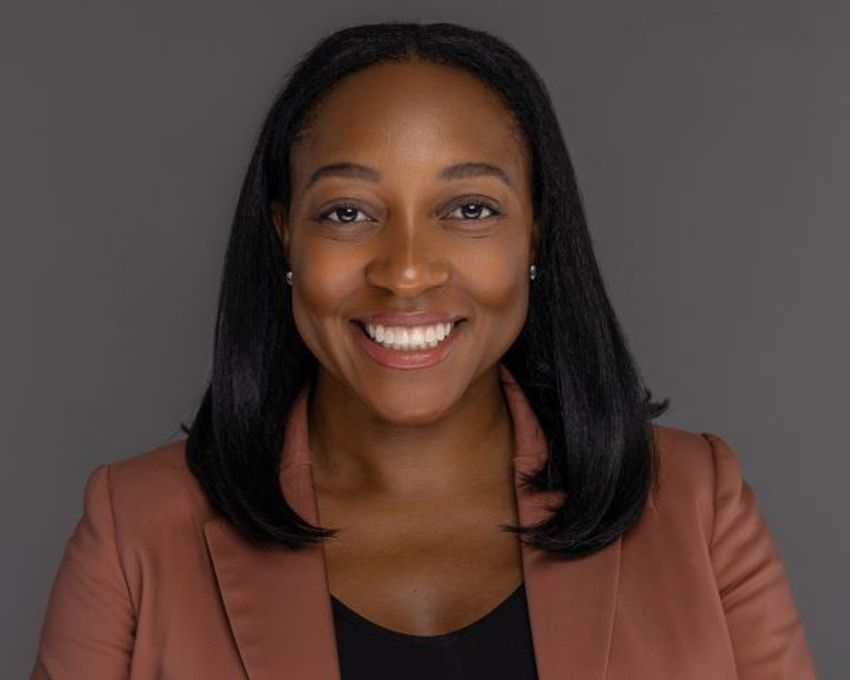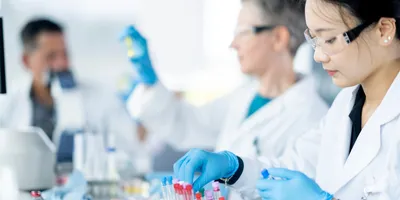Clinical laboratories have long operated behind the scenes—but in an era where health misinformation can spread virally in minutes, their role in community health and trust must become more visible. This was the central message of Octavia M. Peck Palmer, PhD, FADLM, director of the division of clinical chemistry and vice chair of health equity, diversity, and inclusion at the University of Pittsburgh School of Medicine, during her clinical track keynote at the 2025 Lab Manager Leadership Summit.

“We are always behind the scenes,” she said. “Unless we are in various roles that put us public-facing, we’re always behind the scenes doing the work, and […] it plays into some of the misinformation that exists.”
From transactional to integrative roles in the lab
Peck Palmer urged laboratory professionals to move beyond a transactional model of simply processing specimens. Instead, she called on labs to take on a more integrative role in health care—one that utilizes the “longitudinal data that we are consistently generating […] to identify disease early,” assess treatment effectiveness, and even detect community outbreaks.
Defining misinformation, disinformation, and malinformation
Peck Palmer explained that misinformation is typically unintentional—often the result of simple errors, such as mislabeling data or misstating statistics. Disinformation, she said, is deliberate and designed to spread doubt or undermine facts. Malinformation goes a step further, involving intentional harm. “Malinformation is just straight-out deception,” she said.
She cited the COVID-19 pandemic and the Theranos scandal as watershed moments that “pulled [the laboratory] into some of the misinformation,” shaking public trust and highlighting the need for stronger health care communication from lab professionals.
Community outreach and public education
“For our organization, we started to do these, what we would call ‘interviews’ on the news,” she said, describing how her team participated in community outreach to explain lab processes and counter confusion. “There was an opportunity right then and there, and many of us took that opportunity to aid in [curbing] misinformation.”
When test names create confusion
Peck Palmer challenged laboratory professionals to reflect on how the language they use may unintentionally contribute to misinformation. Vague or overly simplified test names can confuse both patients and providers, she explained.
“Could we be actually playing a role in misinformation from the standpoint of how we name certain tests?” she asked.
Common examples include referring to “sugar levels” instead of specifying glucose, or calling a cholesterol test “good lipids and bad lipids” when it is a lipid panel. Even the term “pregnancy test” can be misleading if it’s unclear whether the test detects total or free beta hCG—or whether it's being used to assess molar pregnancy.
She also pointed to drug tests, which often generate confusion. “We have comments that say, ‘presumptive positive, please confirm,’” she noted. “So now someone has a drug test that has a positive result in their medical record and needs to be confirmed.” If that confirmation never happens, misinformation can persist in a way that affects care.
Other examples she raised included casual references to a “gout test” or a generic “DNA test,” which fail to specify the clinical intent or methodology. “What kind of DNA?” she asked. “Is this DNA for bacteria? […] Is this DNA for parental [testing]?”
Lab Safety Management Certificate
The Lab Safety Management certificate is more than training—it’s a professional advantage.
Gain critical skills and IACET-approved CEUs that make a measurable difference.
Ultimately, she warned, “The jargon that we may use […] may, in fact, be adding to misinformation.”
Addressing race-based myths and algorithmic bias
She also urged attendees to consider how cultural assumptions and race-based clinical algorithms perpetuate bias. “If these misinformations or myths are believed, this does impact us,” she said. “If you believe that someone’s skin is thicker, then you may ultimately […] change your standard” for phlebotomy.
For example, Peck Palmer described her institution’s work to remove race-based corrections from estimated glomerular filtration rate (eGFR) calculations, which had historically assigned different kidney function scores based on whether a patient was labeled as “Black” or “non-Black.”
She noted that after removing race-based adjustments from kidney function algorithms, patients across all racial groups experienced improved access to care. “All racial groups have actually been able to see that their wait time has changed,” she said, pointing to “just the fact that we’ve been using misinformation to treat our patients.”
These types of inequities, she explained, contribute to broader mistrust in the health care system—whether from a traumatic phlebotomy experience or inconsistent access to testing between clinics in different neighborhoods.
“All this builds into mistrust,” she said, “but it also highlights that we can do something with this mistrust.”
Correcting misinformation in health care without the backfire effect
That “something” must be thoughtful and evidence-based, especially in an age of social media. Peck Palmer pointed to research on the backfire effect—the idea that correcting misinformation in health care can sometimes reinforce it if done carelessly.
“The more you try to discredit some information,” she said, “the more you cause individuals to believe more in that information.”
Instead of reactive arguments, she urged labs to seek out clear, consistent, and formal ways to correct misinformation within their communities.
“It is important for health care organizations, for us as a profession, to find formal and appropriate venues in which we can share information to provide evidence-based correction,” she said.
Final thoughts
As Peck Palmer emphasized throughout her keynote, clinical laboratories are not just data processors—they are critical communicators of public health. By stepping into more visible roles, using precise language, and addressing misinformation at its roots, laboratorians can foster greater understanding and trust in their communities.













